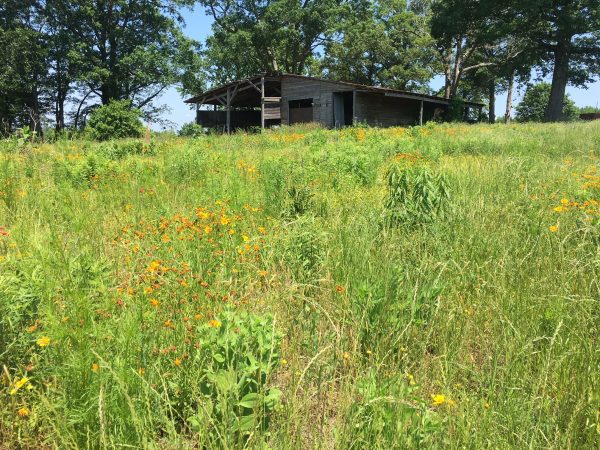Turning backyards into bird sanctuaries across the Piedmont

Wildlife habitat comes in all shapes and sizes, as does opportunity for improving it. The rural nature of the Uwharries and other areas around Charlotte allows us to restore grasslands and forests on a landscape scale, but the same management techniques have also proven successful on smaller parcels in urban parks and nature preserves.
One of the most promising interventions in the rapidly developing Piedmont is to enhance backyard habitat. As a model, consider the revamped gardens at the state’s Executive Mansion in Raleigh.
First Lady Kristin Cooper, who recently attended one of the monthly banding sessions at the early successional habitat on our family’s land in the Uwharries, said she’d been troubled by the overgrown ligustrum hedge on the estate in downtown Raleigh. Originally installed by Dottie Martin, the Victorian garden had declined over the years and seemed beyond restoration. Unattractive and gloomy, it dominated a large swath of the yard. Mrs. Cooper saw an opportunity to make the grounds more appealing to both citizens and wildlife.
The site was cleared, and Audubon North Carolina led efforts to raise funds for new plants. An Audubon member provided design services, and volunteers helped install more than 1,000 native plants at the Executive Mansion and another 500 at the Governor’s Western Residence in Asheville.
In “Bringing Nature Home,” Doug Tallamy laid out the connection between native plants and birds. Virtually all land birds – even the species that consume fruits and seeds as adults – rear their young on insects. Bugs are the basis of the food chain, performing the remarkable task of converting plant material into protein.
The trouble is, many insects are finicky. They shun “exotic” vegetation commonly found in backyards such as fescue, ligustrum and ivy. No bugs – no baby birds. Tallamy advocates for transforming half the 40 million acres of lawn in the U.S. into native vegetation to create “a homegrown national park” for birds and other wildlife.

John Gerwin looks on as Mrs. Cooper releases a yellow breasted chat. Photo: Ruth Ann Grissom
Mrs. Cooper visited the Uwharries on a birdy morning in May. Kelly Douglass, a technical assistance biologist with the N.C. Wildlife Resources Commission, taught her the bird bander’s grip and release technique. She practiced her skills on some of the birds most abundant in our grasslands – indigo buntings, yellow breasted chats and common yellowthroats.
Having worked primarily with a non-profit organization on the transformation of the Executive Mansion gardens, Mrs. Cooper was curious about how we’d implemented the changes on our land. Through the N.C. Wildlife Resources Commission’s Private Lands Program, technical assistance biologist John Isenhour has been able to take our sometimes nebulous goals (“More birds!”) and turn them into a workable plan.
He also helps facilitate applications for funding through various Farm Bill programs to offset management costs. John Gerwin, research curator of ornithology at the N.C. Museum of Natural Sciences, noted similarities with the Prairie Ridge Ecostation in Raleigh. When we began converting our cow pastures to native warm season grasses and forbs, they were doing the same thing on roughly half of a 38-acre site adjacent to the N.C. Museum of Art.
Gerwin said most of the same birds are present on a smaller scale, and there are similar pulses of migration. Backyard gardens might not offer sufficient habitat for a full suite of grassland birds, but butterflies, bees and other beneficial insects quickly descend on native vegetation.
When Gerwin and his wife moved in to their Raleigh home, the yard was mostly grass. They saw only a handful of butterfly species. After adding native shrubs and perennials, they’ve now documented more than 40.
After lunch, the banders brought Mrs. Cooper one final bird to release, a male goldfinch. She had earlier mentioned her fondness for the species, with their bright yellow feathers and their happy chirps.
“They’re such cheerful birds,” she said. This one alighted from her outstretched hand, but unlike other recently banded birds, he didn’t head straight for the nearest thicket. Instead, his bouncy flight took him far across the fields. First, he headed east toward the mountain then banked south toward the creek, vivid against the distant trees.